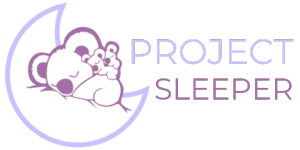Breastfeeding is a beautiful and natural process, but it comes with its own set of challenges. One common issue many nursing mothers face is breast milk leakage. Whether you're a first-time mom or a seasoned pro, unexpected leaks can be uncomfortable, inconvenient, and sometimes even embarrassing. In this blog post, we'll discuss why breast milk leakage happens, how to manage it, and the solutions available to help you stay comfortable and confident.
Why Does Breast Milk Leakage Happen?
Breast milk leakage is a natural part of the breastfeeding journey. It often occurs when your body is adjusting to your baby's feeding schedule, especially in the early weeks postpartum. Here are a few common reasons why leaks happen:
1. Overactive Letdown: Some mothers have a strong letdown reflex, which can cause milk to flow quickly and sometimes unexpectedly. This can lead to leakage, especially if your baby isn’t ready to nurse.
2. Engorgement: When your breasts become overly full between feedings, the pressure can cause milk to leak out. This is more common in the early stages of breastfeeding as your body is learning to regulate milk production.

3. Emotional Triggers: Sometimes, simply hearing your baby cry or thinking about your baby can trigger your letdown reflex, leading to unexpected leakage.
4. Missed Feeding: If you miss a feeding or go longer between feedings than usual, your body may respond by leaking milk to relieve the pressure.
Tips for Managing Breast Milk Leakage
While breast milk leakage is a normal part of breastfeeding, there are ways to manage it and reduce its impact on your daily life. Here are some tips to help you stay comfortable and confident:
1. Use Nursing Pads: One of the most effective ways to manage leakage is by using nursing pads. Reusable options, like our Bamboo Nursing Pads, are eco-friendly and gentle on sensitive skin. Simply place them inside your bra to absorb any leaks and keep your clothing dry.

2. Wear a Supportive Bra: A well-fitting, supportive bra can help hold nursing pads in place and provide the necessary support to reduce leakage. Look for bras specifically designed for nursing, as they often have features like easy-access panels for feeding.
3. Plan Ahead: If you know you're likely to experience leakage at certain times (like during a missed feeding), plan ahead by wearing nursing pads or carrying extra clothing with you.
4. Feed or Pump Regularly: Keeping up with your baby’s feeding schedule or pumping regularly can help prevent your breasts from becoming too full, which can reduce the likelihood of leakage.
5. Dress Strategically: Wearing dark-colored or patterned clothing can help camouflage any unexpected leaks. You might also consider layering your outfits for added protection.
When to Be Concerned
While leakage is generally normal, there are some situations where it might indicate a problem. If you notice persistent pain, unusual swelling, or if your milk production seems excessively high or low, it’s important to speak with a healthcare provider or lactation consultant. They can help you address any underlying issues and ensure that you and your baby are both healthy.

Breast milk leakage is a common experience for many nursing mothers, but it doesn’t have to disrupt your day. By understanding why it happens and taking steps to manage it, you can continue to enjoy the breastfeeding journey with confidence. Products like Bamboo Nursing Pads offer a practical solution, helping you stay dry and comfortable while you focus on what matters most—caring for your baby.

Remember, every mom's breastfeeding journey is unique. If you’re facing challenges or have concerns, don’t hesitate to seek support from lactation consultants, healthcare providers, or breastfeeding support groups. With the right tools and knowledge, you can navigate the ups and downs of breastfeeding with ease.


